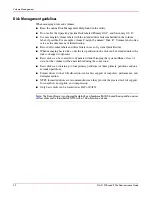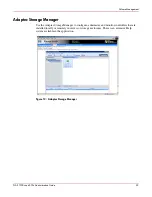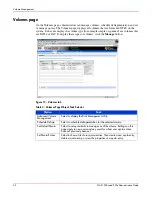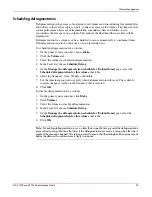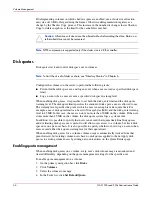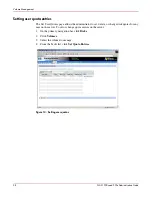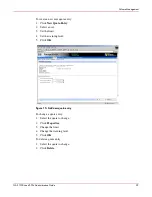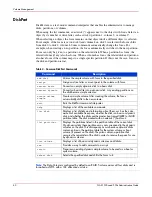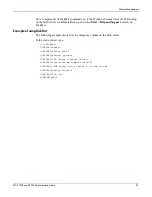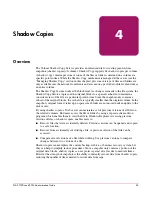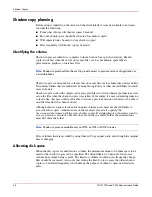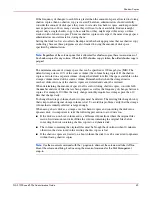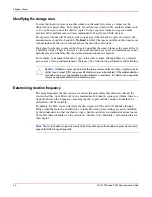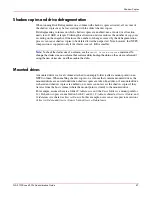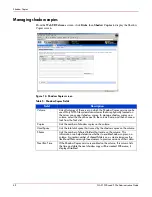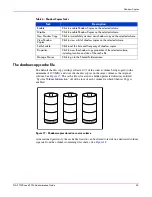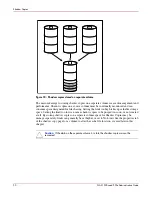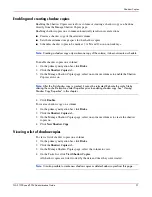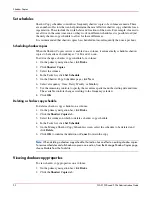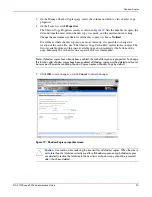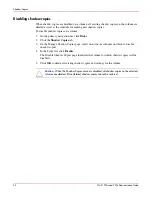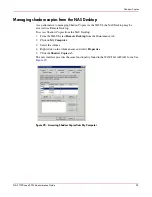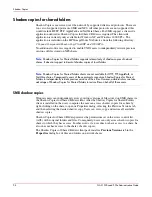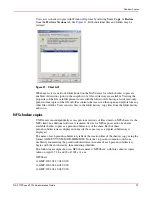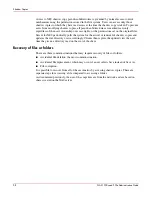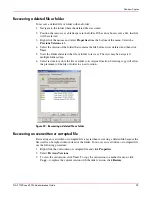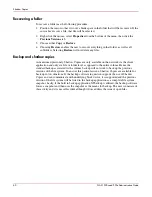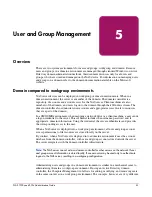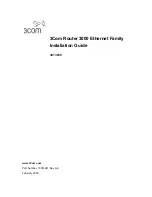
Shadow Copies
46
NAS 1500s and 500s Administration Guide
Identifying the storage area
To store the shadow copies of another volume on the same file server, a volume can be
dedicated on separate disks. For example, if user files are stored on H:\, another volume such
as S:\ can be used to store the shadow copies. Using a separate volume on separate disks
provides better performance and is recommended for heavily used NAS devices.
If a separate volume will be used for the storage area (where shadow copies are stored), the
maximum size should be changed to No Limit to reflect the space available on the storage area
volume instead of the source volume (where the user files are stored).
Disk space for shadow copies can be allocated on either the same volume as the source files or
a different volume. There is, however, a trade-off between ease of use and maintenance versus
performance and reliability that the system administrator must consider.
For example, by keeping the shadow copy on the same volume, although there is a potential
gain in ease of setup and maintenance, there may be a reduction in performance and reliability.
Caution:
If shadow copies are stored on the same volume as the user files, note that a burst
of disk input/output (I/O) can cause all shadow copies to be deleted. If the sudden deletion
of shadow copies is unacceptable to administrators or end users, it is best to use a separate
volume on separate disks to store shadow copies.
Determining creation frequency
The more frequently shadow copies are created, the more likely that end users will get the
version that they want. However, with a maximum of 64 shadow copies per volume, there is a
trade-off between the frequency of making shadow copies and the amount of time that the
earlier files will be available.
By default, the NAS server will create shadow copies at 0700 and 1200, Monday through
Friday when the feature is enabled for a volume. However, these settings are easily modified
by the administrator so that the shadow copy schedule can better accommodate end user needs.
To modify these schedules see the section on “Shadow Copy Schedules” documented later in
this chapter.
Note:
The more shadow copies are created, the more disk space the shadow copies can consume,
especially if files change frequently.

